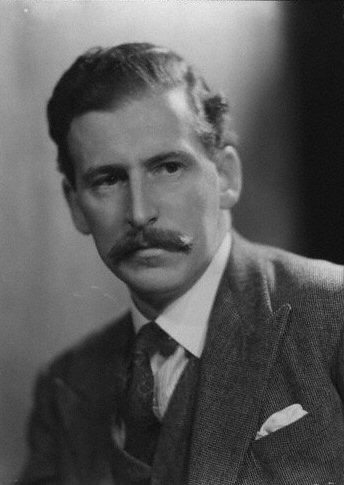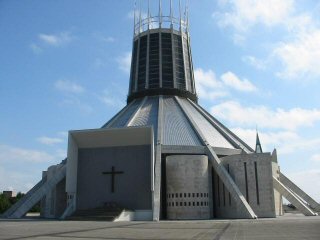

Sir Frederick Ernest Gibberd
Frederick Gibberd was an English architect and landscape designer. He was born on 7 January 1908, the eldest of the five children of a local tailor. When born, the family lived in Spencer Avenue but later moved to Clarendon House in Clarendon Street, where Frederick grew up and realised that he wanted to be an architect. He was educated at King Henry VIII School. In 1925 he was articled to a firm of architects, Crouch, Butler and Savage, in Birmingham and studied architecture under William Bidlake at the Birmingham School of Art, where his room-mate was FRS Yorke. A good friend of Sir Geoffrey Jellicoe, Gibberd's work was influenced by Le Corbusier, Mies van der Rohe, and FRS Yorke. He set up in practice in 1930, designing Pullman Court, Streatham Hill, London (1934–6), a low-cost housing development which launched his career. With the success of this scheme, Gibberd became established as the 'flat' architect and went on to build several other schemes including Park Court, Sydenham, London (1936) and Ellington Court, Southgate, London (1936) continuing to practice until the outbreak of the Second World War. During World War II Gibberd taught at the Architectural Association School, London, and was Principal from 1942 to 1944. He was also influential in the design of prefabricated houses, particularly the design for the British Iron and Steel Federation, which was first erected on a trial estate in Northwood, Middx, in 1944 and used extensively in the rebuilding of Coventry after the war. He was consultant architect planner for the Harlow development and spent the rest of his life living in the town he had designed. Notable works here include The Lawn, Britain's first modern-style point block, consisting of nine storeys arranged in a butterfly design on an area of open ground surrounded by oak trees; a tromp-l'oeil pair of curved terraces facing a cricket green at Orchard Croft, which won a British Housing Award in 1951; the pioneering broken-silhouette flats in Morley Grove; and much of the housing in Mark Hall neighbourhood, which is in its entirety a conservation area. The Harvey Centre lacks architectural distinction, but is notable as an early British example of a large purpose-built indoor shopping mall. His similarly pioneering Sports Centre has been demolished, as has the original town hall. The Water Gardens, although listed by English Heritage, have been spoilt by the abutment of a car park and shopping centre. The garden of his personal home at Marsh Lane, on the outskirts of Harlow, a mixture of formal and informal design, contains architectural elements salvaged from his reconstruction of Coutt's Bank in London. A further achievement by Gibberd in planning Harlow is his incorporation of works by many leading architects of the post-war years, such as FRS Yorke, Powell & Moya, Graham Dawbarn, John Poulson, Maxwell Fry & Jane Drew, Michael Neylan, William Crabtree, Leonard Manasseh, ECP Monson, Gerard Goalen, Gerald Lacoste and Richard Sheppard. A substantial collection of public sculptures is visible around the town ,including works by Henry Moore, Elizabeth Frink, Auguste Rodin and Barbara Hepworth. Harlow is regarded as the most successful of Britain's post-war new towns and functions as an object lesson in modern architecture and town planning. Gibberd's book "Harlow: The story of a New Town", written in collaboration with Len White and Ben Hyde Harvey, is required reading for anyone with an interest in such matters. In 1953 he published "Town Design," a book on the forms, processes, and history of the subject.
The architect's other major achievements included the Roman Catholic Cathedral in Liverpool, the London Central Mosque, the Thomas Cooper Nonconformist Chapel in Lincoln and a monastery in Douai, France, during a career that lasted into the 1970s. The beautiful Gibberd Garden, in Old Harlow, was designed and made by Sir Frederick from the 1950s to his death. He died in January 1984 at the age of 76 years old. Click here to return to 'Local History' |

